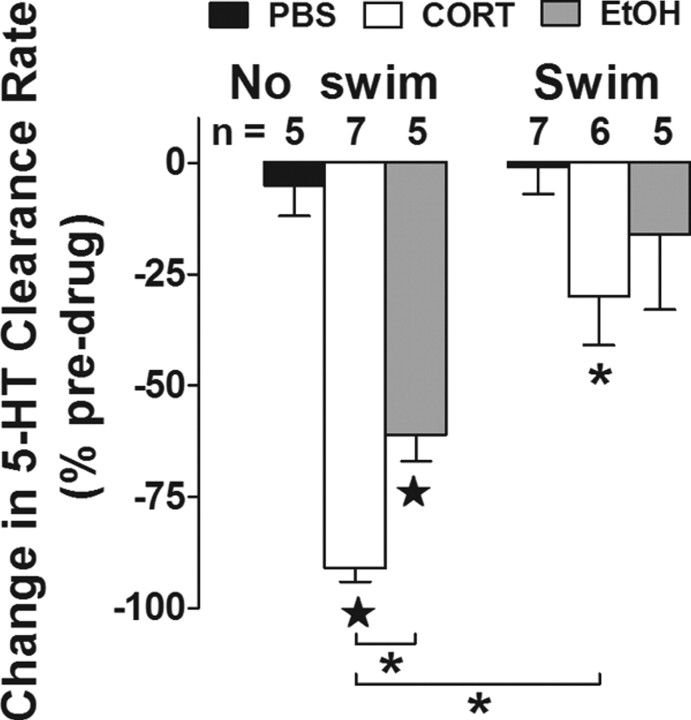Figure 5.
The ability of corticosterone to inhibit 5-HT clearance in hippocampus is dependent on exposure to repeated swim. Change in 5-HT clearance rate (expressed as percentage of baseline) 2 min after hippocampal application of PBS control, EtOH vehicle (0.8 nmol), or corticosterone (272 pmol) in mice exposed to 0 or 14 d of swim. In both groups of mice, corticosterone inhibited 5-HT clearance rate, compared with PBS vehicle, but this effect of corticosterone was blunted in mice exposed to repeated swim (2-way ANOVA with Bonferroni post hoc test, *p < 0.05; ★p < 0.01). EtOH significantly reduced 5-HT clearance rate only in mice that were not exposed to swim. Predrug/vehicle signal amplitudes did not vary among groups. Pooled values were 3.59 ± 0.35 μm (n = 17) and 3.20 ± 0.18 μm (n = 18) for 0 and 14 d swim, respectively. Predrug/vehicle clearance rate was slower in mice exposed to 14 d swim (31.82 ± 5.56 nm/s) compared with control mice (56.58 ± 8.4 nm/s) (t(33) = 2.595, p = 0.015).

